Interpretation | Political Bureau set, blockchain industry welcomes gold development
Author: Song Jiaji
Source: Ji Shi Communication
Summary
Event summary:
- Depth | Block rewards are about to be halved, is BTC still safe? (in)
- 2019 cryptocurrency trend observation: the market is cold, but still has opportunities
- Regarding the blockchain technology that the country pushes, we have given you five key points.
On the afternoon of October 24th, the Political Bureau of the CPC Central Committee (hereinafter referred to as “Political Bureau”) conducted the 18th collective study on the status quo and trend of blockchain technology development (Report Note: The number of times here refers to the 19th National Congress, if there is no note Ming, the same below). In his study, General Secretary Xi emphasized that the integrated application of blockchain technology plays an important role in new technological innovation and industrial transformation; we must use blockchain as an important breakthrough for independent innovation of core technologies, and clarify the main direction of attack. Great investment, focus on a number of key core technologies, and accelerate the development of blockchain technology and industrial innovation. Chen Chun, a professor at Zhejiang University and an academician of the Chinese Academy of Engineering, explained the issue and discussed opinions and suggestions.
Blockchain collective learning emphasizes two major requirements, three major scenarios, and three major guarantees. In this collective study, General Secretary Xi Jinping put forward higher requirements for the development of China's blockchain: 1. In terms of international competition, we must strive to let China take the leading position in the emerging field of blockchain and occupy the commanding heights of innovation. , to obtain new industrial advantages; to enhance the right to speak internationally and rules; 2, domestic social governance, to play a role in the blockchain to promote data sharing, optimize business processes, reduce operating costs, enhance synergy efficiency, build a credible system, etc. The role of, for example, to promote structural reforms on the supply side, to achieve effective docking of supply and demand in various industries; to accelerate the transformation of new and old kinetic energy, and promote high-quality economic development. General Secretary Xi Jinping also mentioned some specific scenarios, such as financial scenarios, difficulties in financing loans for SMEs, difficulties in bank risk control, and difficulties in departmental supervision. In the livelihood service scene, the people are provided with smarter, more convenient and more High-quality public services; improve the level of intelligence and precision of urban management; ensure the orderly and efficient flow of production factors within the blockchain; and maintain and utilize government data across departments and regions in the government affairs scene.
Blockchain positioning has changed beyond expectations, with short-term, medium- and long-term impacts. Previously, the market positioning of the blockchain was rather vague, and even considered "non-mainstream", and the impact of this blockchain new deal can be summarized into three points:
1) From the discussion of various ministries and committees to the unified positioning of the Politburo;
2) From the grassroots technology innovation of geeks to the breakthrough of national independent innovation;
3) From the isolated application scenario to improve the ability of comprehensive social management. It has pointed out the direction for the development of the blockchain industry in the future. In the short term, it clarifies social cognition and corrects industrial bias. In the medium term, it encourages industrial capital and talents to enter, regulates industry supervision; promotes social governance in the long term, and promotes 5G traffic growth in science and technology. The underlying protocol architecture for networking and edge computing.
The blockchain business model gradually evolved into BaaS. The market is worried that the blockchain business model is not mature, and we will evolve to BaaS services as the business moves and the regulation is clear. We simply divide the blockchain business model into two types: commodity sales and financial asset issuance. The first major category, the sale of goods. Regardless of whether the user has purchased the assets on the blockchain (hereinafter referred to as “tokens”), the user in this model pays the legal currency for consumption (such as purchasing chain storage space or under-chain system development BaaS service) instead of generation The appreciation of the currency. The second major category, the issuance of financial assets. Users in this model only want to buy tokens at a higher price in the future, that is, for investment needs, and in some cases such assets have securities attributes.
Grasping the three main lines of finance, people's livelihood and government affairs. We recommend the following three blockchain companies on the main line. 1. Financial services. (1) Supply chain finance: easy to see shares, Hailian Jinhui; (2) financial technology: Quartet Jingchuang; (3) financial security, blockchain asset hardware storage: Weishitong, Feitian integrity. 2. People's livelihood services. (1) Electronic invoice, payment: Donggang shares, Guangdian Express; (2) Electronic certification: digital certification; (3) Copyright service: Anne shares. 3. Government affairs scene: Huayu Software.
Risk warning: Blockchain technology development is not up to expectations; blockchain business model is not up to expectations.
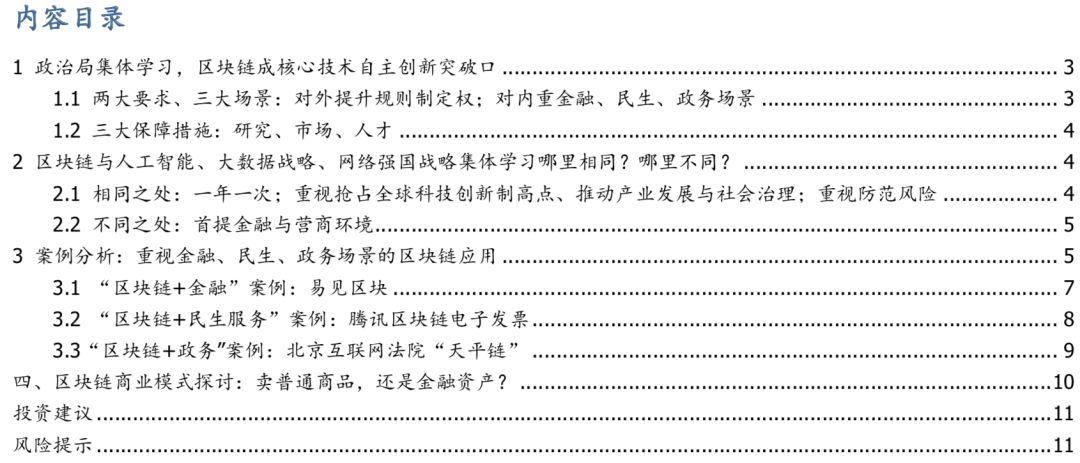 1. The Political Bureau collectively learns, and the blockchain becomes the core technology independent innovation breakthrough. On the afternoon of October 24, the Political Bureau of the CPC Central Committee (hereinafter referred to as “Political Bureau”) conducted the 18th collective study on the status quo and trend of blockchain technology development. (Report Note: The number of times here refers to the 19th National Congress, if not stated, the same below). In his presiding study, General Secretary Xi Jinping emphasized that the integration and application of blockchain technology plays an important role in new technological innovation and industrial transformation; we must use blockchain as an important breakthrough for independent innovation of core technologies, and clarify the main direction of attack. Great investment, focus on a number of key core technologies, and accelerate the development of blockchain technology and industrial innovation. Chen Chun, a professor at Zhejiang University and an academician of the Chinese Academy of Engineering, explained the issue and discussed opinions and suggestions.
1. The Political Bureau collectively learns, and the blockchain becomes the core technology independent innovation breakthrough. On the afternoon of October 24, the Political Bureau of the CPC Central Committee (hereinafter referred to as “Political Bureau”) conducted the 18th collective study on the status quo and trend of blockchain technology development. (Report Note: The number of times here refers to the 19th National Congress, if not stated, the same below). In his presiding study, General Secretary Xi Jinping emphasized that the integration and application of blockchain technology plays an important role in new technological innovation and industrial transformation; we must use blockchain as an important breakthrough for independent innovation of core technologies, and clarify the main direction of attack. Great investment, focus on a number of key core technologies, and accelerate the development of blockchain technology and industrial innovation. Chen Chun, a professor at Zhejiang University and an academician of the Chinese Academy of Engineering, explained the issue and discussed opinions and suggestions.
Previously, on May 28, 2018, General Secretary Xi Jinping made an important speech at the 19th Academician Conference of the Chinese Academy of Sciences and the 14th Academician Conference of the Chinese Academy of Engineering, blockchain and artificial intelligence, quantum information, and mobile. Communication and the Internet of Things are listed as representatives of next-generation technologies.
We believe that the reason for launching the blockchain new deal at the current point in time is three reasons:
1) Policy orientation
The open and transparent technical characteristics of the blockchain itself are important tools for improving the ability of social governance. It has a unique role in solving the problems of precision poverty alleviation, difficulty in financing small and micro enterprises, and opening up data islands.
2) Technology orientation
Under the background of Sino-US trade friction, any technology track should not be ignored. Blockchain technology is gradually recognized as an important part of the next generation of information technology;
3) Regulatory orientation
Previously, the blockchain development in China was uneven. After a period of rectification, it has improved. At present, the Ministry of Industry and Information Technology has launched two phases of filing, and it is expected that it will continue to advance, and supervision is for better development.
1.1 Two major requirements, three major scenarios: the right to raise rules for external promotion; the internal financial, people's livelihood, government affairs scene
In the collective study of the Politburo, General Secretary Xi Jinping put forward higher requirements for the development of China's blockchain:
1. In terms of international competition , we must make efforts to make China's blockchain, the emerging field, at the forefront of theory, occupy the commanding heights of innovation, gain new industrial advantages, and enhance the right to speak and rule in the world;
2. In terms of domestic social governance , it is necessary to play the role of blockchain in promoting data sharing, optimizing business processes, reducing operating costs, improving synergy efficiency, and building a credible system, for example, creating convenient, efficient, fair competition, stable and transparent. Business environment; promote supply-side structural reforms, achieve effective docking of supply and demand in various industries; accelerate the transformation of new and old kinetic energy, and promote high-quality economic development. General Secretary Xi Jinping also mentioned some specific scenarios, such as
In the financial scenario, it is difficult to solve the problem of financing loans for SMEs, difficulties in bank risk control, and difficulties in departmental supervision;
In the scene of people's livelihood , provide more intelligent, more convenient and better public services for the people; improve the level of intelligence and precision of urban management; and ensure the orderly and efficient flow of production factors within the blockchain;
In the government affairs scene, the government data will be maintained and utilized across departments and regions to bring better government service experience to the people.
It is worth noting that General Secretary Xi Jinping also emphasized the security requirements for the development of China's blockchain:
1. Strengthen the guidance and regulation of blockchain technology, strengthen the research and analysis of blockchain security risks, closely track development trends, and actively explore development laws.
2. It is necessary to explore the establishment of a safety guarantee system that adapts to the technical mechanism of blockchain, and guide and promote blockchain developers and platform operators to strengthen industry self-discipline and implement safety responsibilities.
3. Implement the rule of law network into the management of blockchain and promote the safe and orderly development of blockchain.
1.2 Three major safeguards: research, market, talent
General Secretary Xi Jinping also proposed a number of safeguards to achieve the above objectives in the collective study of the Politburo. For example,
1. Research and technical support: strengthen basic research; promote collaborative research and accelerate breakthroughs in core technologies;
2. Ecology and market support: build an industrial ecology and give play to market advantages;
3. Talent support : Strengthen the construction of talent team, establish and improve the talent training system, build a variety of high-level talent training platforms, and cultivate a group of leading figures and high-level innovation teams.
Previously, the market positioning of the blockchain was rather vague, and even considered "non-mainstream", and the impact of this blockchain new deal can be summarized into three points:
1) From the discussion of various ministries and committees to the unified positioning of the Politburo;
2) From the grassroots technology innovation of geeks to the breakthrough of national independent innovation;
3) From the isolated application scenario to improve the ability of comprehensive social management.
The New Deal has pointed out the direction for the development of the blockchain industry in the future. In the short term, it clarifies social cognition and corrects industrial bias. In the medium term, it encourages industrial capital and talents to enter, regulates industry supervision; improves social governance in the long run, and promotes 5G traffic growth in science and technology. The underlying protocol architecture for the Internet of Things and edge computing.
Pay attention to risk prevention. Consistent with the collective learning of the previous Politburo, this blockchain collective study attaches importance to the prevention of risks, attaches importance to the rule of law and strengthens research.
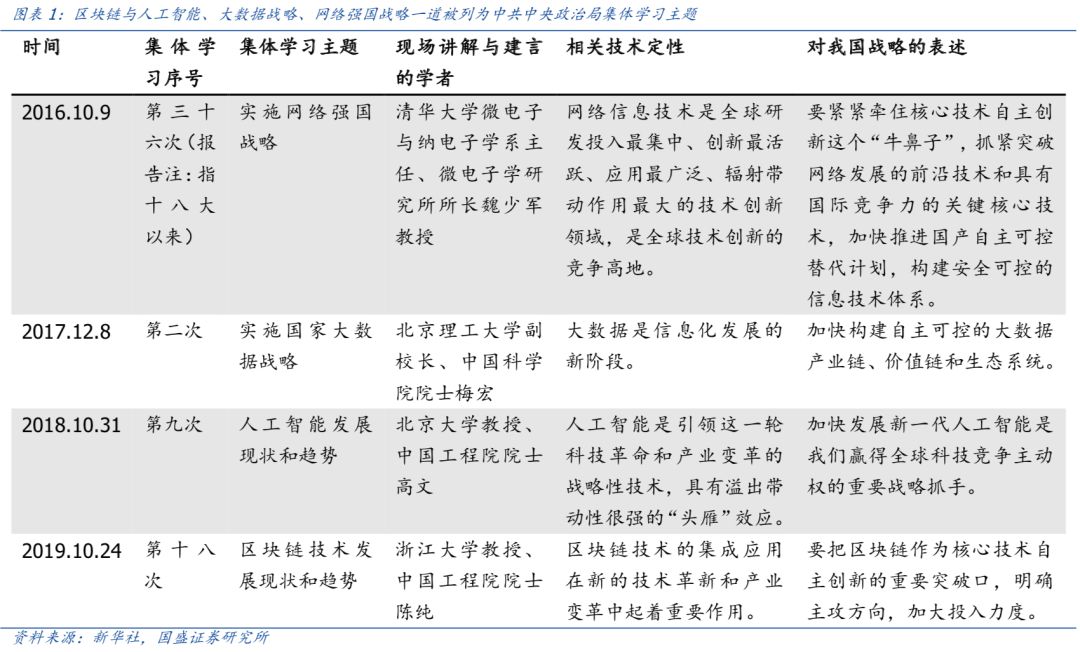
2.2 Differences: the first financial and business environment
Different from the previous Politburo collective learning, we noticed that the blockchain collective learning for the first time proposed that technology should help financial development and business environment, which reflects the political situation of the political bureau and the improvement of the business environment. Highly valued. The relevant expression is: the application of blockchain technology has been extended to digital finance, Internet of Things, intelligent manufacturing, supply chain management, digital asset trading and other fields; solving the problem of financing loans for SMEs, difficulties in bank risk control, and difficulties in departmental supervision Create a convenient, efficient, fair competition, stable and transparent business environment; use blockchain technology to promote greater interoperability between cities in terms of information, capital, talents, and credit information.
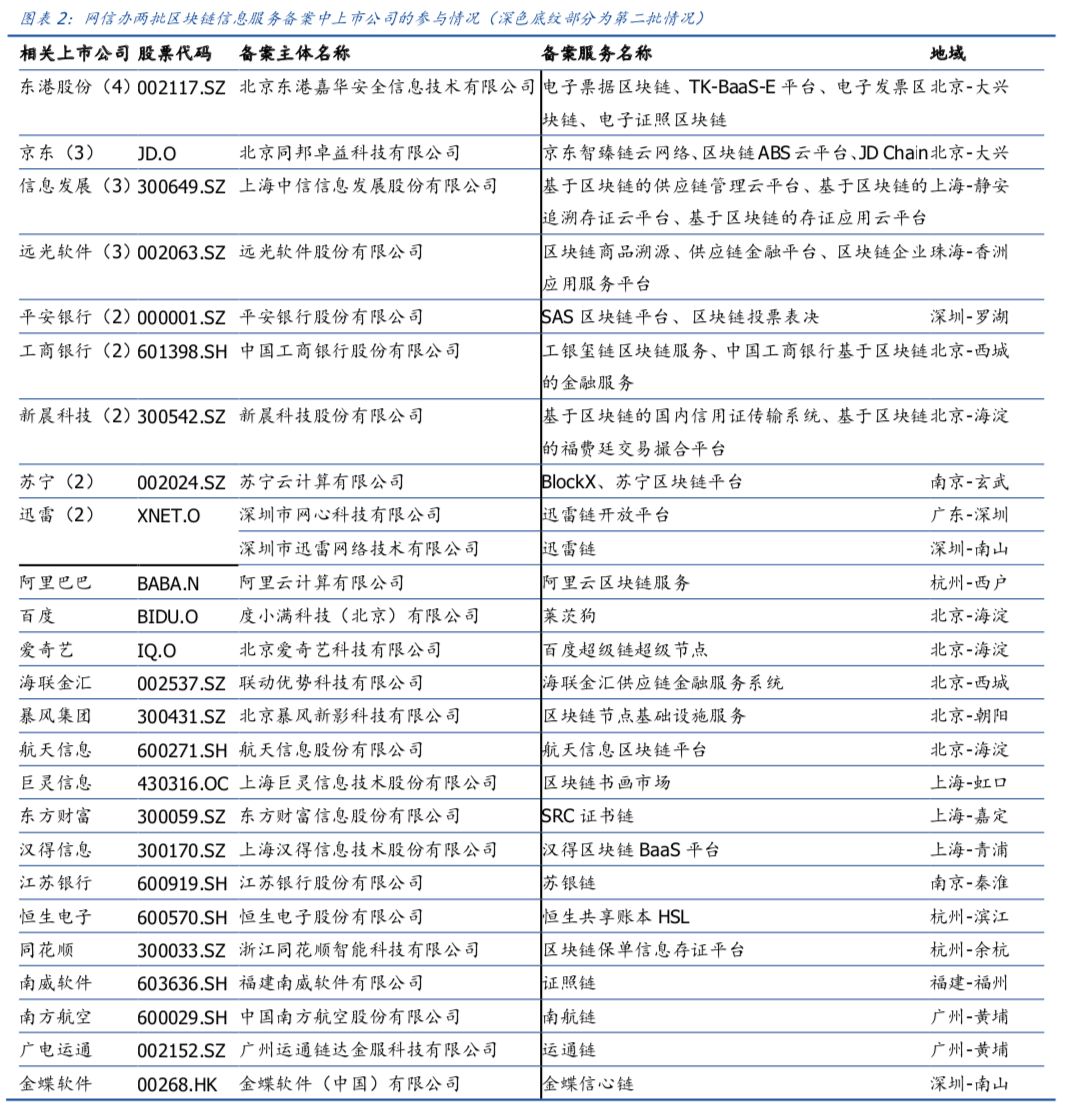
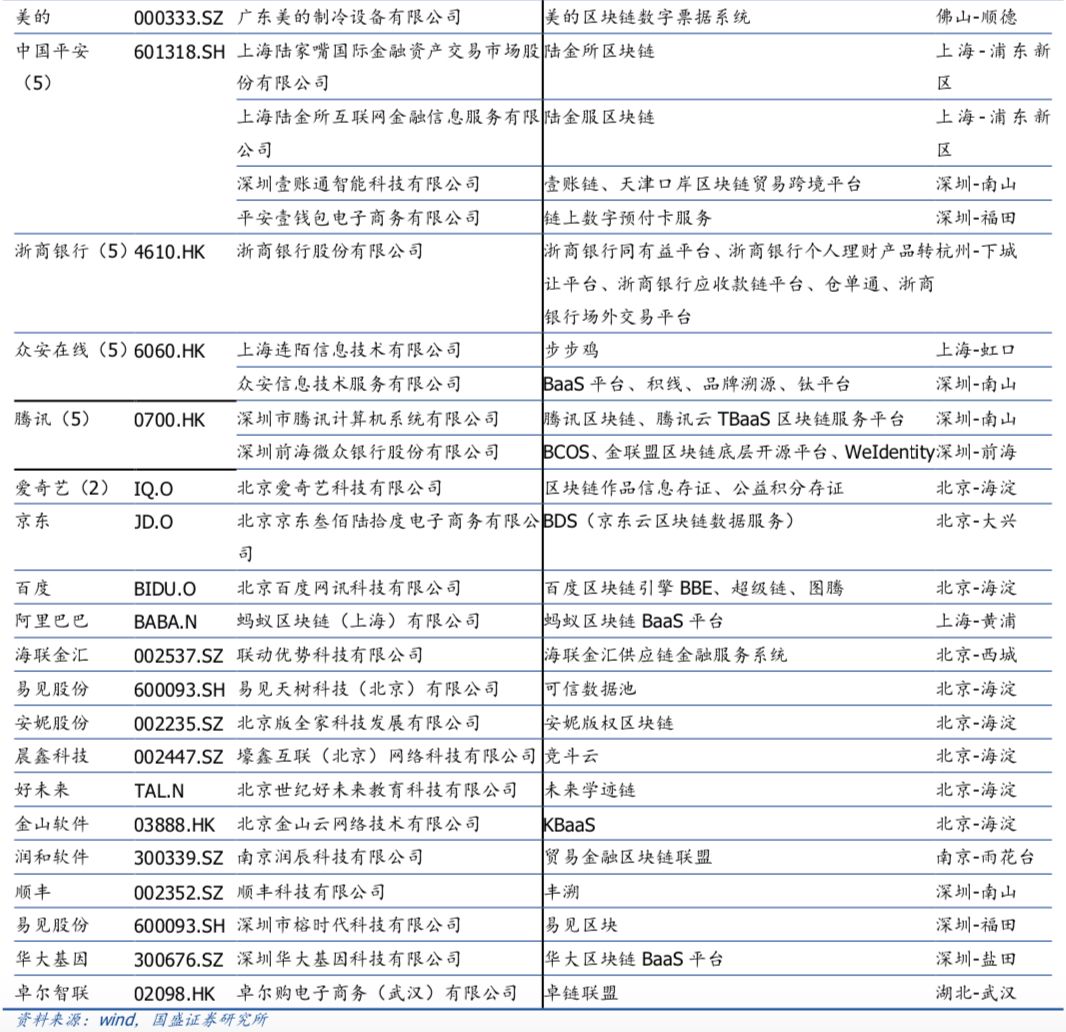
3.1 “Blockchain+Finance” case: easy-to-see block
Based on the alliance blockchain platform, it is expected to effectively solve the financing difficulties of the SMEs in the supply chain industry and the high cost of trust. According to the data of the Prospective Industry Research Institute, it is expected to grow to 15 trillion yuan in 2020. Supply chain finance can inject capital into upstream suppliers, improve the operational efficiency and overall competitiveness of the supply chain, and is of great significance for activating the supply chain.
The financing model of supply chain finance mainly includes accounts receivable financing, confirming warehouse financing and financing through financing. Under the traditional supply chain financial business model, there are two main pain points: the 1+N circulation of core enterprise credit and the verification of the authenticity of trade background. Blockchain technology can achieve credit penetration in the supply chain financial system, and solve the problem of financing difficulties and financing for secondary supplier distributors. The blockchain plays two roles in it, firstly the core enterprise confirmation process; secondly, it proves the true validity of the creditor certificate circulation. In this trusting ecology, the core enterprise's credit (tickets, credit lines or payables confirmation rights) can be converted into digital warrants, and the risk of compliance can be prevented through smart contracts, so that credit can be effectively transmitted along the supply chain, reducing cooperation costs and improving Performance efficiency. More importantly, when the digital warrants can be anchored in the chain, it is expected to realize the splitting and circulation of funds from upstream and downstream enterprises through smart contracts, greatly improving the speed of funds, and solving the financing difficulties and financing of SMEs. The problem.
Supply chain trading companies are actively “winding up”. The Ministry of Industry and Information Technology "2018 China Blockchain Industry White Paper" analyzed four supply chain financial platform cases including Tencent Blockchain, Easy View Shares, Financial Accounts and Zheshang Bank. Based on the real trade background of supply chain, blockchain The technical characteristics make the upstream and downstream parties in the supply chain actively “wind up”. The “Easy Block” supply chain financial application system developed by Yijian Co., Ltd. based on blockchain technology was launched in April 2017. The system is centered on the “core enterprise+, controllable commodity+, dynamic asset ABS+” scenario. Manufacturing, pharmaceutical, logistics, bulk, aviation, real estate and other nearly 10 industries and more than 10 financial institutions. The “Easy Block” platform can realize the five functions of “trade portrayal, transaction visualization, credit machine, direct connection between banks and enterprises, privacy protection”. The “Easy Block 2.0” system has created a traceable supply chain financial service plan. Focus on solving data trust and financial risk issues in supply chain financial scenarios. As of October 26, 2019, the “Easy Block” supply chain platform has completed nearly 176,000 trusted transactions, with over 15 billion trustworthy transactions and 419 financing contracts on the chain, with a financing amount exceeding 4.7 billion yuan. Through the online system of “Easy Block”, the real trading background of the two parties in the transaction is recorded and characterized in real time. Based on the huge and real trade background of suppliers, upstream and downstream enterprises urgently need a technology platform such as blockchain to solve the industry pain points. Enterprises are actively embracing the blockchain situation.
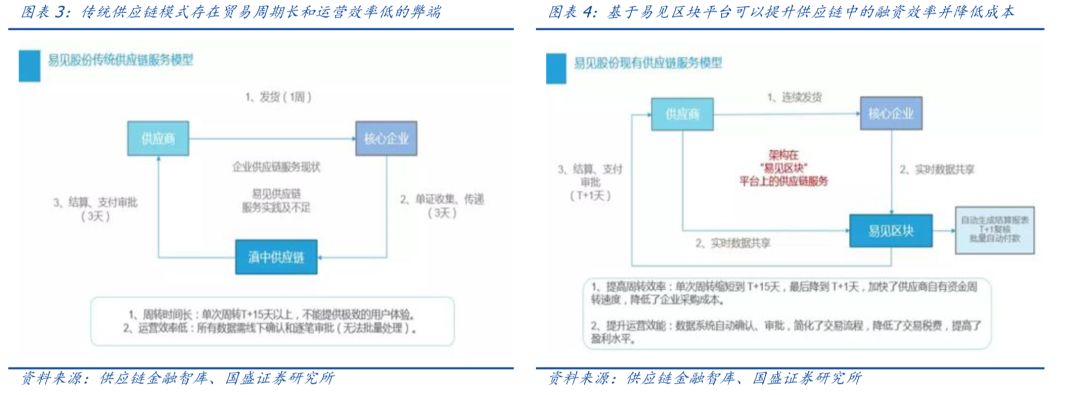
3.2 “Blockchain+Minsheng Service” Case: Tencent Blockchain Electronic Invoice
On August 10, 2018, the country's first blockchain electronic invoice was implemented in Shenzhen. Under the guidance of the State Administration of Taxation, the blockchain electronic invoice was implemented by the Shenzhen Taxation Bureau and Tencent Company. It is the first research result of the “blockchain+invoice” ecosystem application in the country. As of August 10, 2019, Shenzhen blockchain electronic invoices have been issued more than 6 million, more than 5,300 companies have registered to use blockchain electronic invoices, including China Merchants Bank, Ping An Bank, Weizhong Bank, Taiping Insurance Wal-Mart, Baiguoyuan, NUS Pharmacy, Shenzhen Metro, Shenzhen-Hong Kong Taxi, West Lake Taxi, Vanke Property, Country Garden and many other large-scale key enterprises.
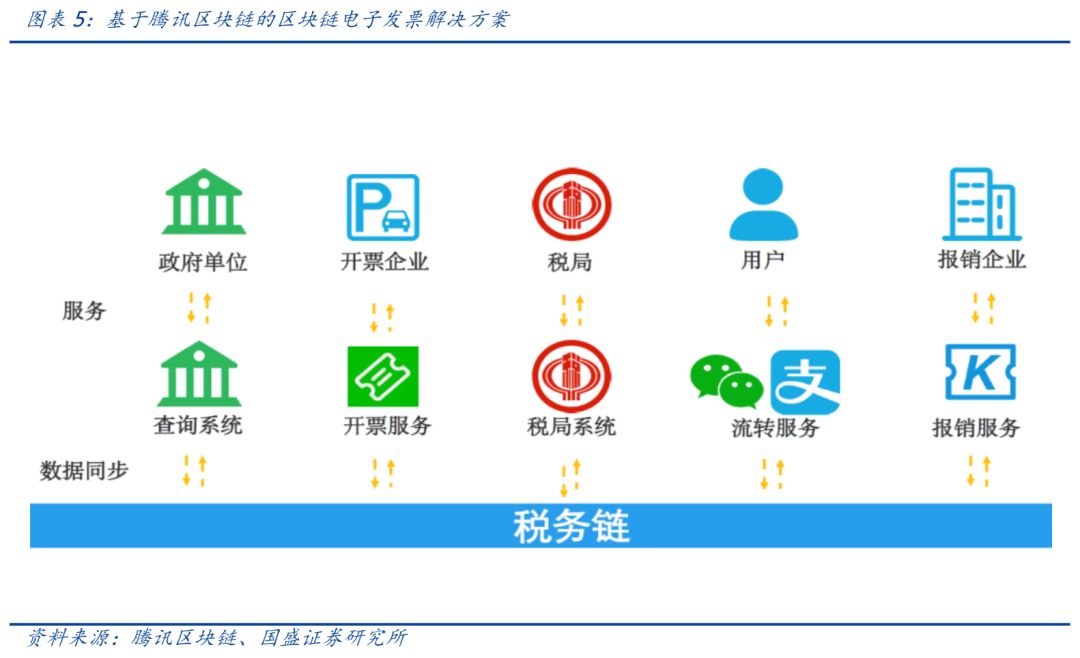
In line with market pain points, the alliance chain is rapidly exerting its strength and accelerating its popularity. On March 18, 2019, the country's first rail transit blockchain electronic invoice was opened at the Futian Station of Shenzhen Metro, officially announcing the electronic invoice function of the Shenzhen Metro's bus code on the blockchain. Guangdian Express participated in the docking and payment of the Shenzhen Metro to the Shenzhen Inland Revenue Bureau blockchain electronic invoice system. From now on, users will use Tencent's smart transportation products to take the Shenzhen Metro, and they will be able to open blockchain electronic invoices online. In addition to the Shenzhen Metro, taxis, airport buses and other traffic scenes simultaneously feature online blockchain electronic invoicing. After the end of each trip, the Shenzhen Metro Passenger Code can be invoiced by the relevant prompts on the WeChat Payment Deduction Voucher page. As of 20:17 on March 18, the number of electronic invoices issued by users through the block code has exceeded 10,000. Song Lingyun, general manager of Tencent Smart Transportation, said: “The blockchain electronic invoice is a convenient and environmentally friendly new service for Shenzhen Metro access codes. Users can invoice, and the electronic collection of tickets is improved. The smart travel experience has been improved.” The Shenzhen Metro will issue about 160,000 paper invoices per day. After the blockchain electronic invoice is put on the Shenzhen Metro ticket code, it will effectively alleviate the inconvenience of large invoices and paper invoices.
3.3 "Blockchain + Government Affairs" Case: Beijing Internet Court "balance chain"
Beijing completed its first decision to use blockchain deposit certificates, and the power of blockchain electronic deposits appeared. On April 9, 2019, the Beijing Internet Court's first judgment using the "balance chain" evidence was released. The case involved copyright infringement and the blockchain electronic deposit certificate was the key evidence of this judgment. As of April 11, Beijing Internet Court “Tianping Chain” collected nearly 3.6 million online data, corresponding evidence files or 657 million online evidence verification data. There are 58 cases involving evidence of the balance chain in the Beijing Internet Court. Due to the powerful “power” of the “balance chain”, the electronic evidence disputes of related cases are very small, and more than 40 pieces have been successfully mediated or withdrawn. Due to the characteristics of volatility, easy change and no trace, the electronic evidence is difficult to obtain, difficult to obtain evidence, and difficult to identify. Therefore, on September 9, 2018, the Beijing Internet Court built the first e-evidence open ecological platform, the Tianping Chain, which was established by the Internet court and actively participated by all parties in the industry, to solve the problem of e-evidence and difficulty in obtaining evidence. Identify difficult issues. The power of blockchain technology or the weapon to solve the pain points of electronic deposits has begun to appear.
The combination of regulatory assistance and market demand promotes a new experience in government service. Article 11 of the Provisions of the Supreme People's Court on Several Issues Concerning Internet Trial Cases, which was implemented on September 7, 2018, states: "Electronic data submitted by the parties, through electronic signature, trusted time stamp, hash value check The technical means of collecting, fixing and tamper-proofing evidence such as blockchains or through electronic evidence collection platform certification can prove its authenticity, and the Internet court should confirm it." This is the first time the Supreme People's Court has conducted blockchain technology. The authenticity of the electronic data of the deposit certificate is interpreted judicially, and the legal effect of the blockchain deposit is further confirmed. Blockchain encryption and non-tamperable technical features are precisely the pain points in government and social services; the blockchain-based government system will bring more convenience and efficiency, and enhance the government service experience.
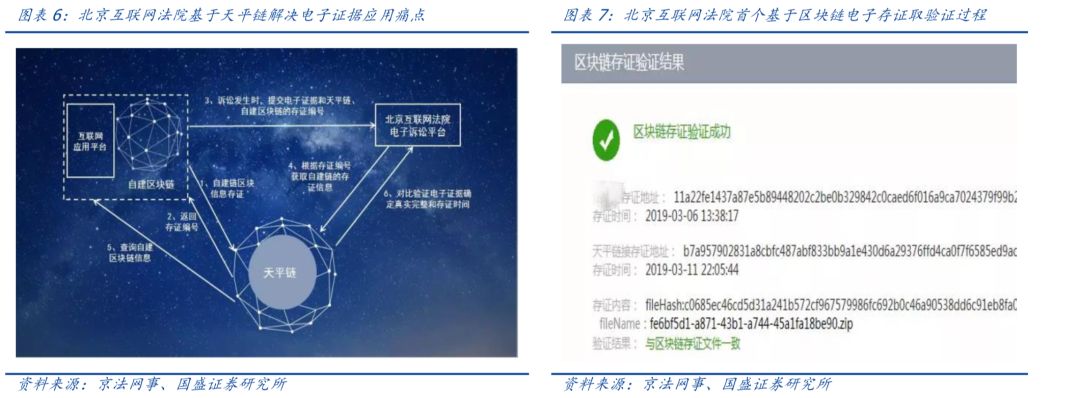
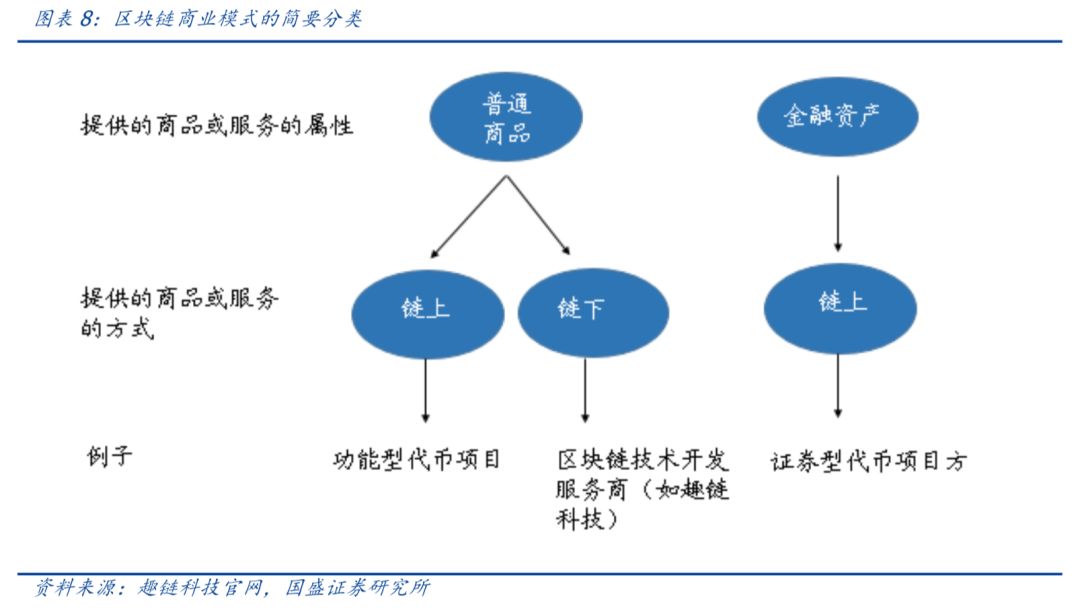
We will continue to update Blocking; if you have any questions or suggestions, please contact us!
Was this article helpful?
93 out of 132 found this helpful
Related articles
- Industrial innovation is an important breakthrough direction of blockchain
- Xinhua News Agency: China's blockchain industry has broad prospects for development
- CCTV News Public Issues: The "blockchain" that has been frequently named recently is awkward?
- How to choose the "forked road" of the blockchain, the alliance chain or the public chain?
- The so-called "heavy weight" is becoming "heavy and bad", only one correct decision can be made…
- The peak moment of the blockchain
- Let the data speak: the world has shifted from digital tokens to digital currency





